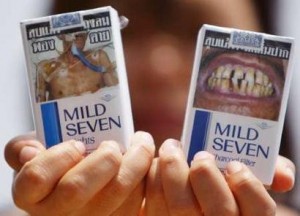A 7-page, 1985 brainstorming document from the R.J. Reynolds collection lists ideas about how to market RJR’s flagship brand Camel cigarettes to young people who usually smoke the rival brand Marlboro. A cautionary note on the front page warns, “PLEASE NOTE: the following ideas were generated in an unstructured idea generation session. They have not been evaluated with regard to legal issues, marketing feasibility or cost considerations.” And how. Some of the ideas listed are pretty wacky, and include having coupons for on-pack contests for the following items thought to appeal to younger smokers:
— Beer
— Clearasil
— Dinner with Eddie Murphy
— Trip won by parents of FUBYAS [“First Usual Brand Younger Adult Smokers”] that gets parents out of town for FUBYAS party (includes cleaning crew and extra refrigerator).
— Catchy, slightly lewd T-shirts (“Wanna hump?”)
— Late show admission with week’s worth of CAMEL packs.
— CAMEL courtesy bus at beach – to and from bars.
— Survival kit (what to do when arrested, etc.)
–“Pay” peer leaders to smoke brand.
— Free nose rings
— Free car insurance
Other ideas include developing a new dance called The Hump, and putting on concerts that have specially-reserved seating for Camel smokers or where Camel packs can be used as an entrance fees.
See the document for yourself here.
Source: FUBYAS Idea Generation Output, 1985, R.J. Reynolds document collection, Legacy Tobacco Documents Library.



